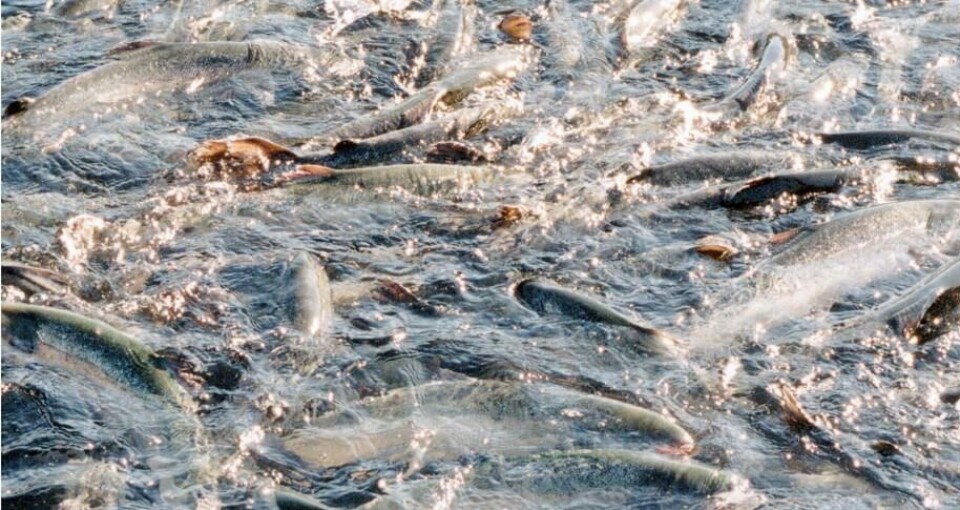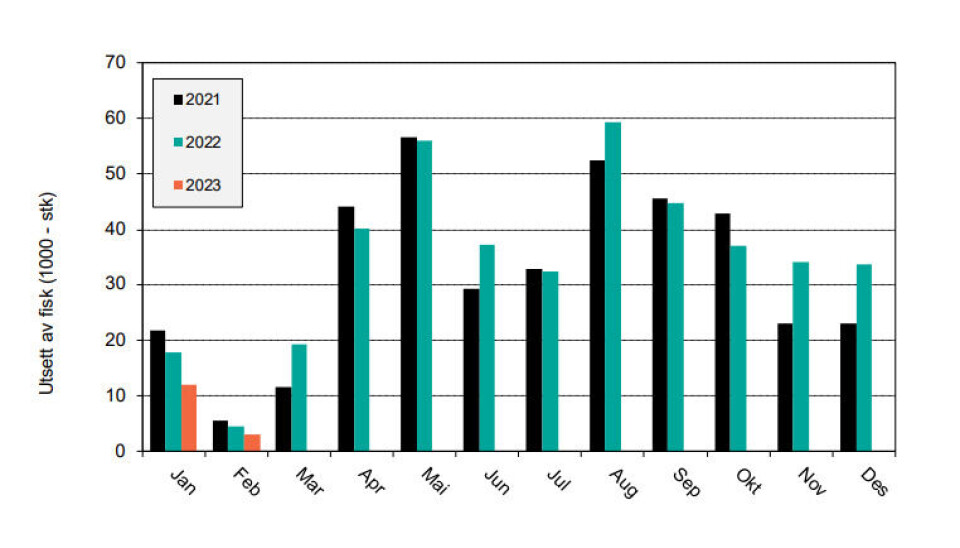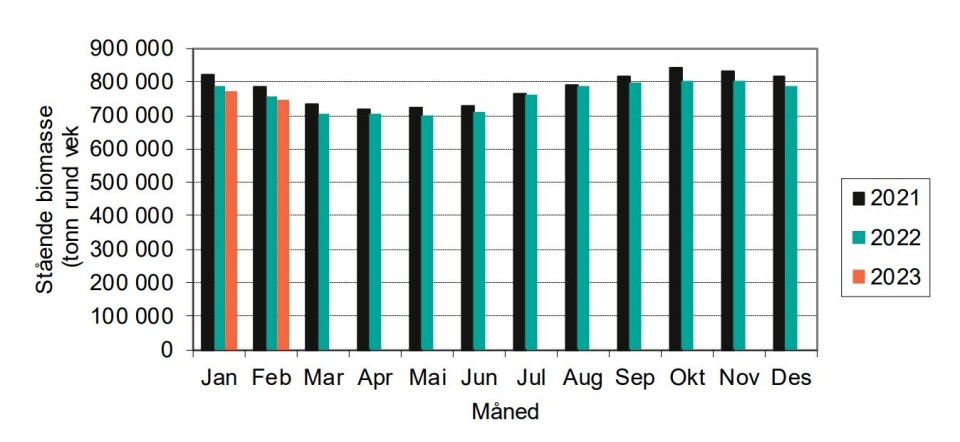
Norway had its lowest February salmon farm biomass in four years
The volume of salmon in marine fish farms in Norway in February was the lowest for that month since 2019.
Fish farmers in Norway – the world’s largest producer of Atlantic salmon – had 746,000 tonnes of salmon in the sea last month, which is 9,000 fewer tonnes than in February 2022.
The volume of salmon exported from Norway last month also fell compared to February 2022. Norway exported 95,000 tonnes last month, a decrease of 8%.
However, higher prices meant that the value of salmon exports was NOK 8.8 billion (£682 million), 15% higher than in February last year.
Three million salmon smolts were stocked in Norwegian marine sites last month, a 34% fall compared to February 2022. Norway’s salmon farmers stocked 14.8 m fish into marine sites in January and February this year, which is a 33% fall compared to the same period last year.

The number of trout stocked in February this year was 2.4 m, almost matching salmon stockings for the month, although when January’s stockings are added, there is still a big difference: 14.8 m salmon against 3.9 m trout.
The average sea temperature at farm sites in February was 5.6 degrees Celsius, 0.6 degrees above February last year, and 0.4 degrees above the average for the period 2013 – 2021.
It is especially north of Stad (and Rogaland/Agder) that it has been warmer than last year, while in Vestland it has been about the same as last year.
Temperatures remain cooler than in Scotland, where they have rarely dropped below 8 degrees in recent winters. This causes a problem because fish farmers are less likely to see a slowdown in amoebic gill disease (AGD) in their stock in winter, and means the fish require more freshwater treatments to maintain health.
























































